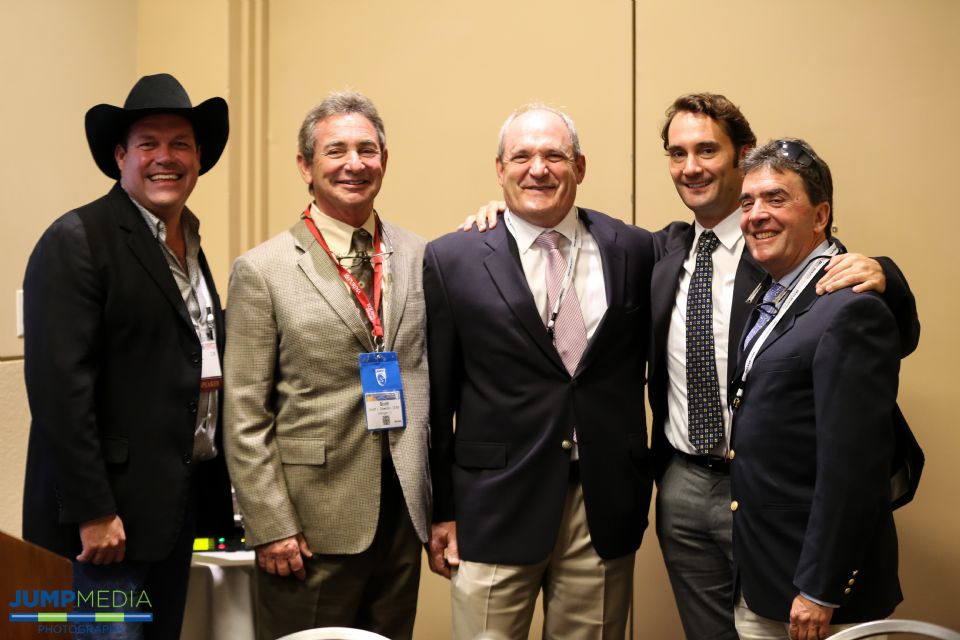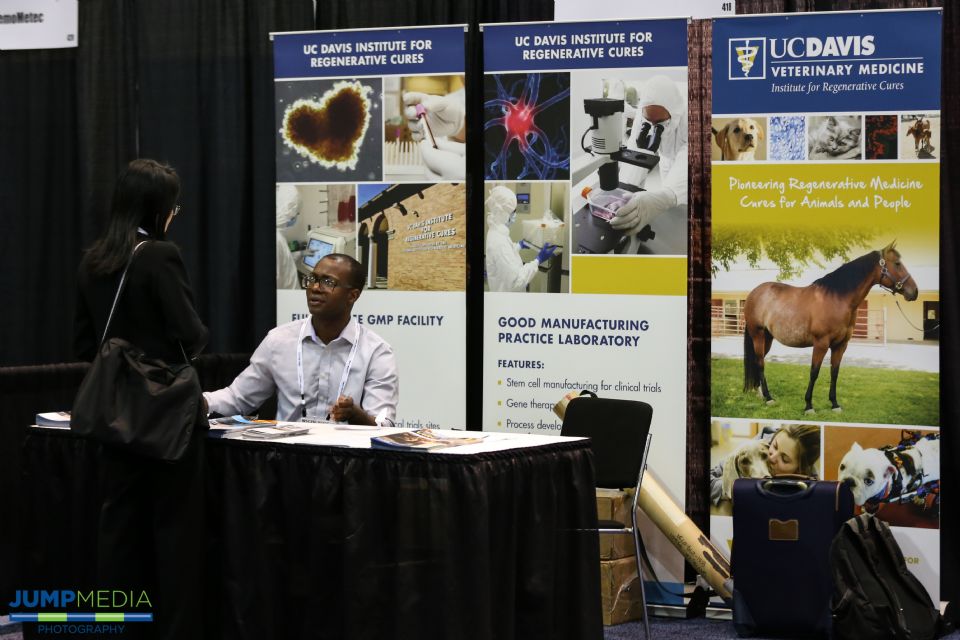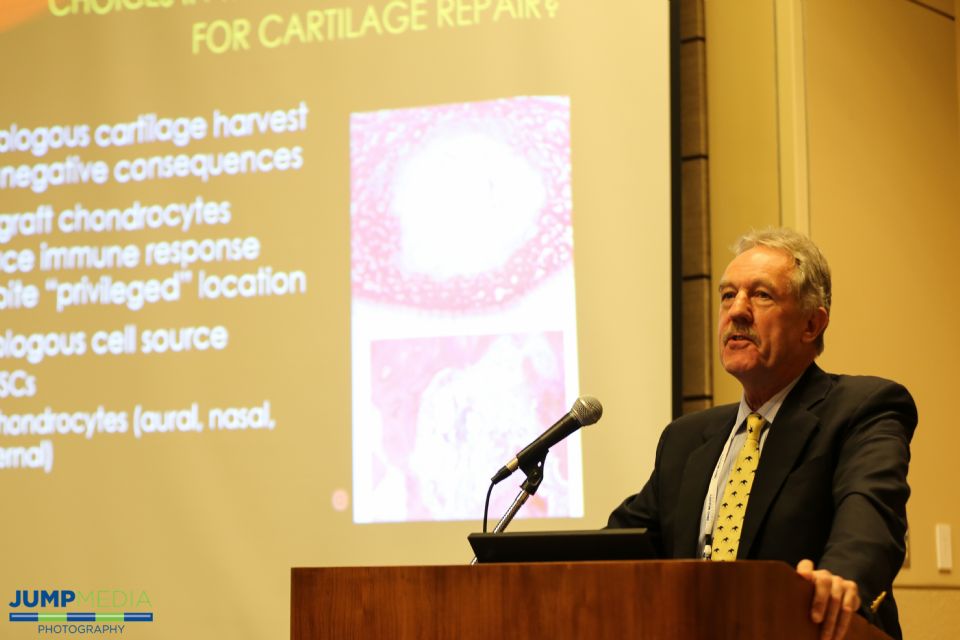Successful Equine World Stem Cell Summit Receives High Praise at Inaugural Event
December 15, 2016 - West Palm Beach, Florida
Photo by Jump Media
Photo by Jump Media
Photo by Jump Media
For the first time since its inception, the World Stem Cell Summit (WSCS) welcomed the equestrian community to a special, tailored track of the 12th annual conference, held December 7-9, 2016, at the Palm Beach County Convention Center in West Palm Beach, FL.
This inaugural focused track, the Equine World Stem Cell Summit, presented an exciting opportunity for an array of researchers, veterinarians, and equestrians to actively engage in the single largest conference uniting the global stem cell community.
“It’s a great opportunity to get together with some of the scientists who are in the lab looking at this from the opposite level,” said Dr. Richard Wheeler of Palm Beach Equine Clinic, a sponsor of the 2016 Equine World Stem Cell Summit.
Wheeler and fellow Palm Beach Equine Clinic colleagues, Dr. Robert Brusie and Dr. Jorge Gomez, were among the actively practicing veterinarians who spoke on the impact that regenerative medicine is having on equine medicine.
Other practicing equine veterinarians sharing insights into the efficacy of specific cases, the utilization of amnion, stromal vascular fraction, and platelet rich plasma in equines, the orthopedic and neurological applications of regenerative medicine, and more included Priscilla Ortiz Poras, DVM, of Innova Celulas Madre in Costa Rica and Dr. Rogerio Martins Amorim, DVM, MSc, PhD, Faculty of Veterinary and Animal Science, Veterinary Clinic Department, Veterinary Neurology Service of São Paulo, Brazil.
“[The Summit] has been very, very good and very productive as far as as alternatives to palliative therapy,” said attendee Dr. Kevin Brophy of Victory Vet in Wellington, FL. “I do think regenerative medicine is certainly the way of the future for my practice.”
Brophy continued, “I recommend [the Equine World Stem Cell Summit] to both small animal and equine veterinarians for sure. It’s not just for orthopedic or musculoskeletal issues either. We had a great talk on neurology, and there was a case today of a very productive outcome for equine protozoal myeloencephalitis (EPM).”
Among those sharing findings from clinical trials and research were Dori Borjesson, BA, DVM, MPVM, PhD, Professor and Researcher, Pathology, Microbiology & Immunology, of University of California, Davis; Graham Parker, PhD, Wayne State University; Jeanne Loring, Scripps Research Institute; Dr. Mathieu Spriet, DVM, MS, Diplomate American College of Veterinary Radiology, Associate Professor, Department of Surgical & Radiological Sciences, of University of California, Davis; track keynote speaker Arnold Caplan, PhD, Professor Biology and Director, Skeletal Research Center, of Case Western Reserve University; and Steven C. Ghivizzani, PhD, of University of Florida College of Medicine.
For many of the researchers, including Ghivizzani, the introduction of the Equine World Stem Cell Summit to the larger WSCS stage has allowed them to share the findings that are proving relevant across both equine and human medicine and to learn more from practitioners and researchers on both sides.
“I’m not a veterinarian, so for me, working with veterinarians gave us the chance to take our experimental therapies and try them on a large scale – on a human scale,” said Ghivizzani. “I just think the benefits are tremendous. Those who are in human medicine really need to work more closely with those certainly in equine medicine [and] the opportunities to really look at your therapies and see what they do on a large scale – and again with the same diagnostics. All of those things are the same so you really get a sense of what’s happening and what’s going on there. I can’t understand why people don’t do it more!”
Ghivizzani’s sentiments were echoed by Karl Nobert of Recellerate, a manufacturer of stem cell therapeutic preparations for veterinary and medical purposes.
“I think it’s important because it’s the development process for everything else that’s being talked about here,” Nobert said. “It’s the foundation; it’s the pre-clinical data that supports the human drug therapy. Everything that they’re talking about on the human side today will be supported by animal data – the horse, the dog, the cat.”
Nobert spoke throughout the summit on the regulatory challenges associated with regenerative medicine and stem cell therapies and on working with the Food and Drug Administration (FDA) to develop equine regenerative medicine products.
Also representing regenerative medical companies were Brandon Ames, CEO of AniCell BioTech and highly-respected regenerative medicine researcher and CEO of VetStem Biopharma, Inc., Dr. Robert Harman, DVM, MPMVM.
The Equine World Stem Cell Summit was also proud to welcome Dr. Alan Nixon, Director of Comparative Orthopaedics Laboratory, Professor, Department of Clinical Sciences, Cornell University, and the Chair of the Board of Directors at the North American Veterinary Regenerative Medicine Association (NAVRMA).
NAVRMA partnered with the Equine Stem Cell Summit in the event’s inaugural year, and Nixon looks forward to continuing the partnership in years to come.
“The advantages of having those sorts of talks exposed at this sort of broad summit are multi-disciplinary,” Nixon said. “They impact practitioners as well as researchers and university environments. It makes a good melting pot to exchange ideas.
“It’s beneficial to us [at NAVRMA] as a small group. It’s too small to be able to give the whole audience a big exposure to other people doing similar work or collaborations that they could form. You get fairly broad number of talks – from companion animal to equine tracks – but you’re talking to the same group,” Nixon continued. “What I’m hoping is that the association alliance will allow us to broaden our talks, but also allow us to get more involved with other people that are talking here afterward either as research collaborations or marketing collaborations or the pipeline system for approvals through the FDA. Those things are going to come out of this environment.”
Following the great success of the 2016 Equine World Stem Cell Summit, plans are already in the works to expand the event for 2017, with details to be announced. To learn more about the World Stem Cell Summit and the Equine World Stem Cell Summit please visit www.worldstemcellsummit.com/equine.
About the Equine World Stem Cell Summit
The Equine World Stem Cell Summit is the newest dedicated track of the annual World Stem Cell Summit. Throughout the 2016 conference, leading scientists and veterinarians presented fellow researchers, veterinarians, owners, trainers, riders, and interested public with the latest information on the regenerative medicine that is transforming the care and treatment of horses.
The World Stem Cell Summit, produced by the Regenerative Medicine Foundation, strives to unite, educate, and empower the global stem cell and regenerative medicine communities and to create a supportive environment for the field.
The principal organizing partners for the 2016 World Stem Cell Summit included the Regenerative Medicine Foundation, Mayo Clinic, Kyoto University Institute for Integrated Cell Material Science, Center for Advancement of Science in Space (CASIS), Wake Forest Institute for Regenerative Medicine, Interdisciplinary Stem Cell Institute at the University of Miami Miller School of Medicine, Nova Southeastern University, CCRM and the Cure Alliance. To learn more, visit www.worldstemcellsummit.com.






